Aimen Zerroug
A Benchmark for Compositional Visual Reasoning
Jun 11, 2022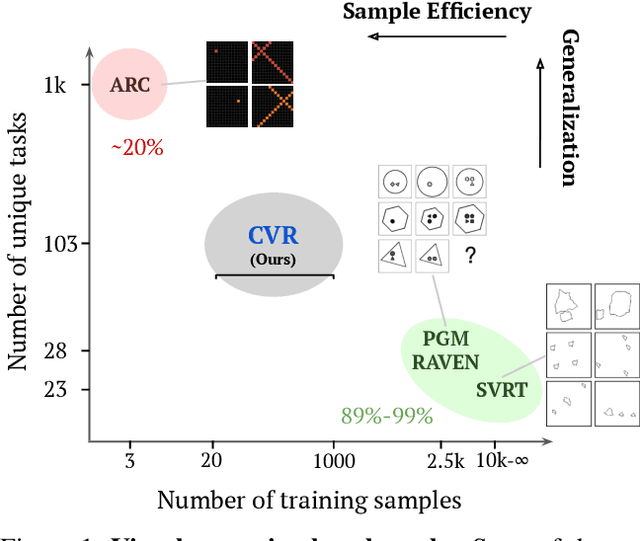
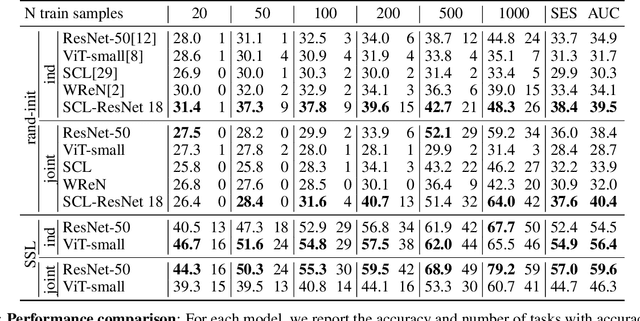
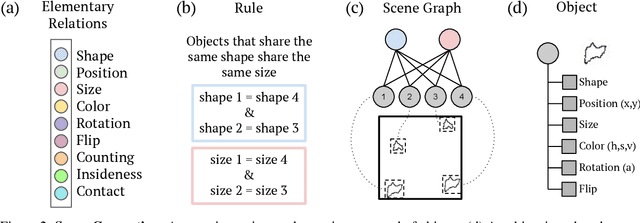
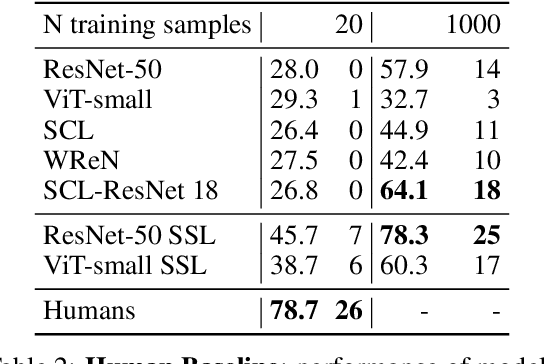
Abstract:A fundamental component of human vision is our ability to parse complex visual scenes and judge the relations between their constituent objects. AI benchmarks for visual reasoning have driven rapid progress in recent years with state-of-the-art systems now reaching human accuracy on some of these benchmarks. Yet, a major gap remains in terms of the sample efficiency with which humans and AI systems learn new visual reasoning tasks. Humans' remarkable efficiency at learning has been at least partially attributed to their ability to harness compositionality -- such that they can efficiently take advantage of previously gained knowledge when learning new tasks. Here, we introduce a novel visual reasoning benchmark, Compositional Visual Relations (CVR), to drive progress towards the development of more data-efficient learning algorithms. We take inspiration from fluidic intelligence and non-verbal reasoning tests and describe a novel method for creating compositions of abstract rules and associated image datasets at scale. Our proposed benchmark includes measures of sample efficiency, generalization and transfer across task rules, as well as the ability to leverage compositionality. We systematically evaluate modern neural architectures and find that, surprisingly, convolutional architectures surpass transformer-based architectures across all performance measures in most data regimes. However, all computational models are a lot less data efficient compared to humans even after learning informative visual representations using self-supervision. Overall, we hope that our challenge will spur interest in the development of neural architectures that can learn to harness compositionality toward more efficient learning.
Iterative VAE as a predictive brain model for out-of-distribution generalization
Dec 01, 2020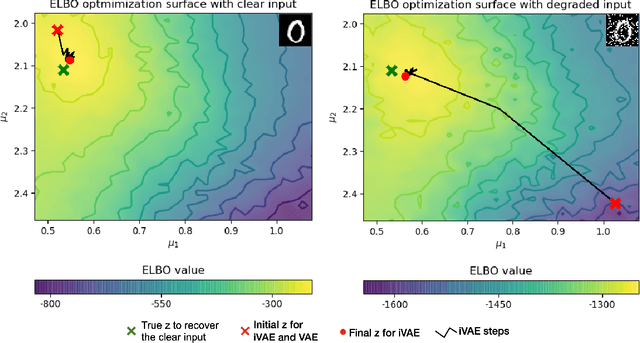
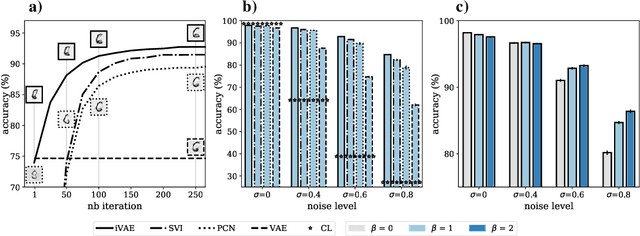

Abstract:Our ability to generalize beyond training data to novel, out-of-distribution, image degradations is a hallmark of primate vision. The predictive brain, exemplified by predictive coding networks (PCNs), has become a prominent neuroscience theory of neural computation. Motivated by the recent successes of variational autoencoders (VAEs) in machine learning, we rigorously derive a correspondence between PCNs and VAEs. This motivates us to consider iterative extensions of VAEs (iVAEs) as plausible variational extensions of the PCNs. We further demonstrate that iVAEs generalize to distributional shifts significantly better than both PCNs and VAEs. In addition, we propose a novel measure of recognizability for individual samples which can be tested against human psychophysical data. Overall, we hope this work will spur interest in iVAEs as a promising new direction for modeling in neuroscience.
 Add to Chrome
Add to Chrome Add to Firefox
Add to Firefox Add to Edge
Add to Edge